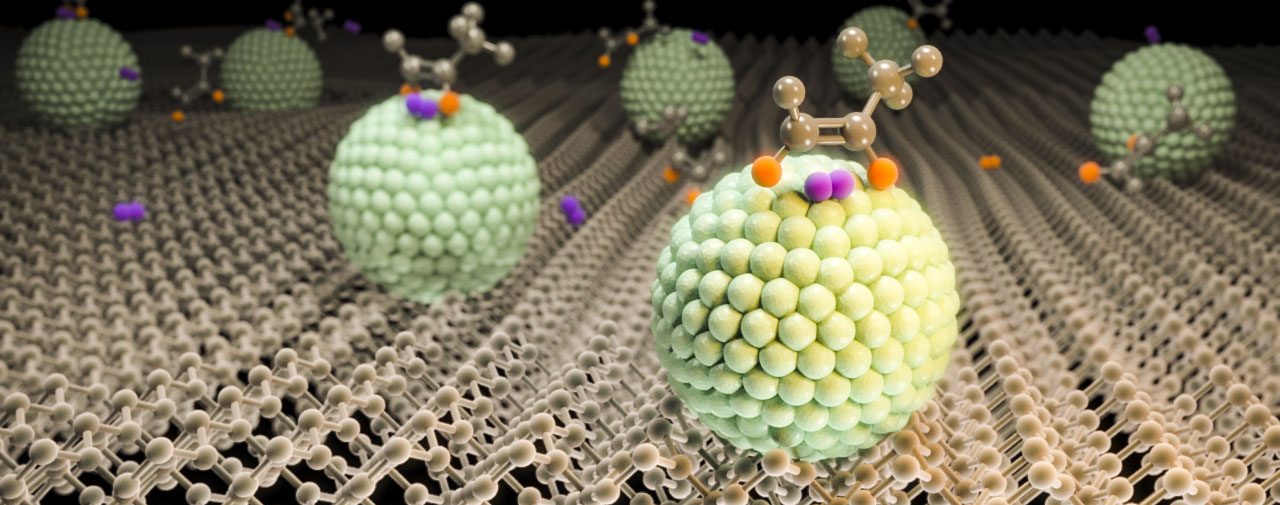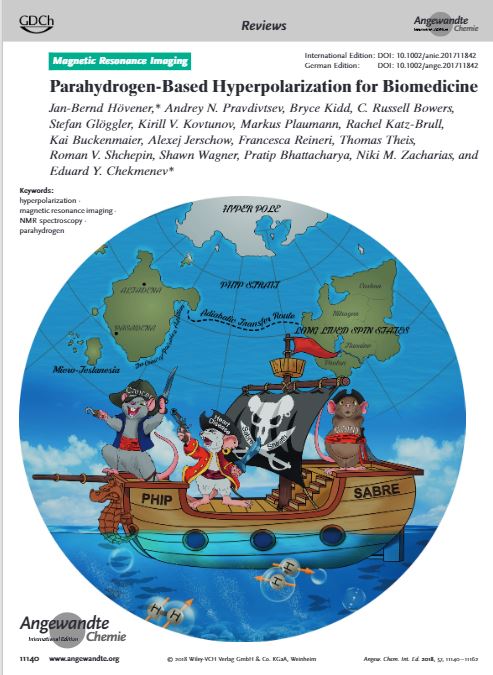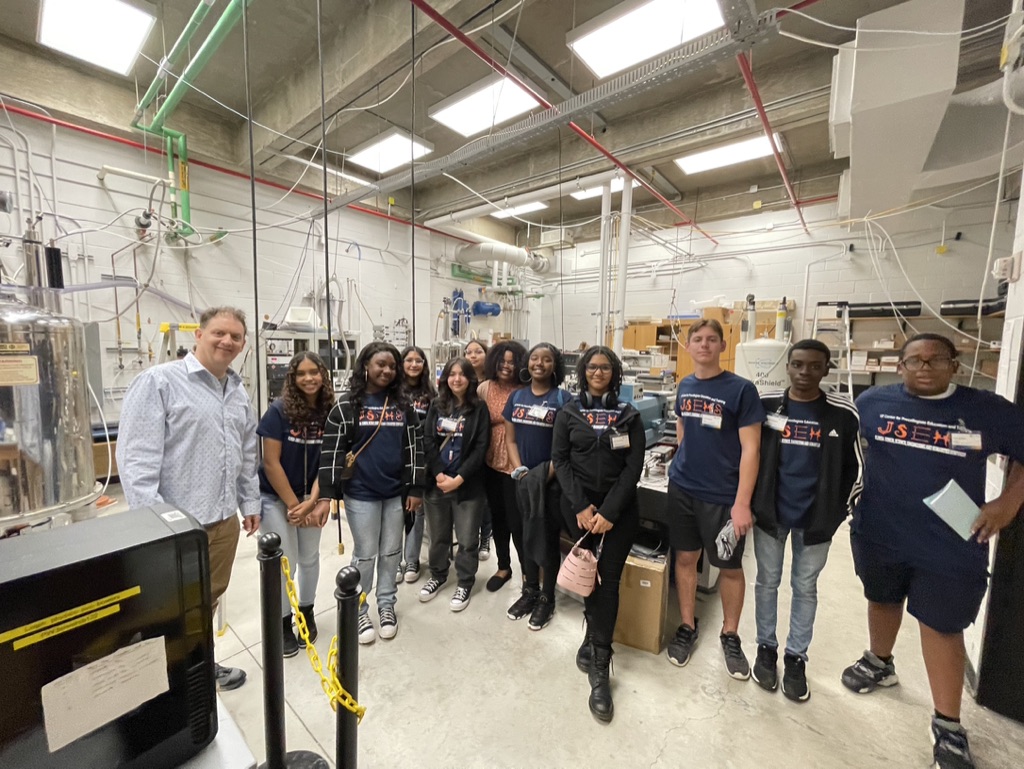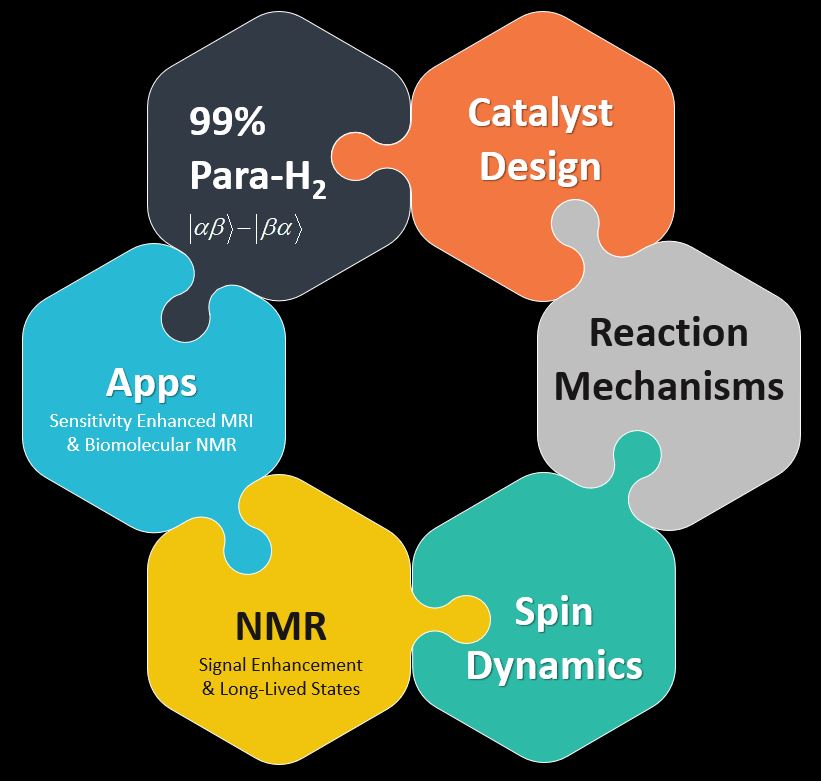
Nuclear magnetic resonance (NMR) spectroscopy utilizes radio-waves to probe atomic-scale structure and dynamics in molecules and materials. NMR is widely applied in fundamental research as well as engineering, medicine and industry. One of the greatest challenges for applications of NMR is the inherently low sensitivity due to the weak alignment of the magnetic nuclei and low efficiency of radio wave (Faraday Law) detection. Hyperpolarization methods can help over overcome this limitation. Over the past few decades, an entire research community devoted to the development of hyperpolarization methods has emerged.
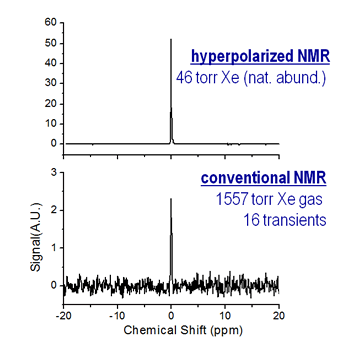
J. Mag. Reson. (2002)
Among the most successful of hyperpolarization techniques exploits the symmetrization order inherent to parahydrogen, the singlet spin isomer of dihydrogen. The method was proposed in 1986 by Prof. Dan Weitekamp (Caltech) and Russ Bowers who was a second-year graduate student in Weitekamp’s lab at the time. The prediction, published in Physical Review Letters, was confirmed experimentally and the results were published in a 1987 JACS communication. The two seminal papers have received nearly 2000 citations to date (Google Scholar, 4/2023). Research related to hyperpolarization from parahydrogen accelerated as the potential application to in-vivo magnetic resonance imaging became apparent. A vibrant research community continues to expand, and many variants of the original “PASADENA” effect have been published. Several major review articles on biomedical applications and instrumentation used for parahydrogen-enhanced MRI/S have recently been published.
As a Professor at the University of Florida, Bowers re-entered the field of parahydrogen-enabled NMR in 2015 and the lab transitioned to parahydrogen-enhanced hyperpolarization by heterogeneous catalysis as the main research focus. Partnerships with experts in catalysis science were formed with the goal of developing solid catalysts that deliver high-performance conversion of parahydrogen spin order into hyperpolarization in liquids and gases. In collaboration with Prof. Helena Hagelin-Weaver of UF Chemical Engineering, Pt, Ir, Rh, and Pd nanoparticles were prepared on various support materials (e.g. silica, alumina, titania, and ceria) and tested in a variety of parahydrogen NMR experiments. In some cases, new insights into the molecular mechanisms and kinetics of hydrogenation were obtained. For instance, in a recent collaboration with the Institute for Cooperative Upcycling of Plastics (iCOUP) EFRC based in Ames, Iowa, parahydrogen-enhanced NMR was employed to confirm the final step of the proposed mechanism for polyolefin hydrogenolysis over ultrasmall amorphous zirconia nanoparticles.
The Bowers lab is currently exploring new approaches for the practical and efficient conversion of parahydrogen proton spin order to hyperpolarization of heteronuclei in biomolecules.
Perhaps the most remarkable discovery in the Bowers lab was surface-mediated singlet-to-magnetization conversion over Pt3Sn intermetallic nanoparticles (iNP). Referred to as the SWAMP effect (Surface Waters Are Magnetized by Parahydrogen), it was shown that hyperpolarized water, methanol, and ethanol can be produced simply by bubbling parahydrogen gas through suspensions of an insoluble catalyst in the Earth’s field. Potential applications include sensitivity-enhanced NMR of proteins, medical angiography, and low-field MRI. The. remarkable iNP materials were synthesized in the laboratory of Prof. Wenyu Huang (Iowa State Chemistry Department) using a novel ship-in-a-bottle protocol where the intermetallic phase is prepared within a protective mesoporous silica shell.
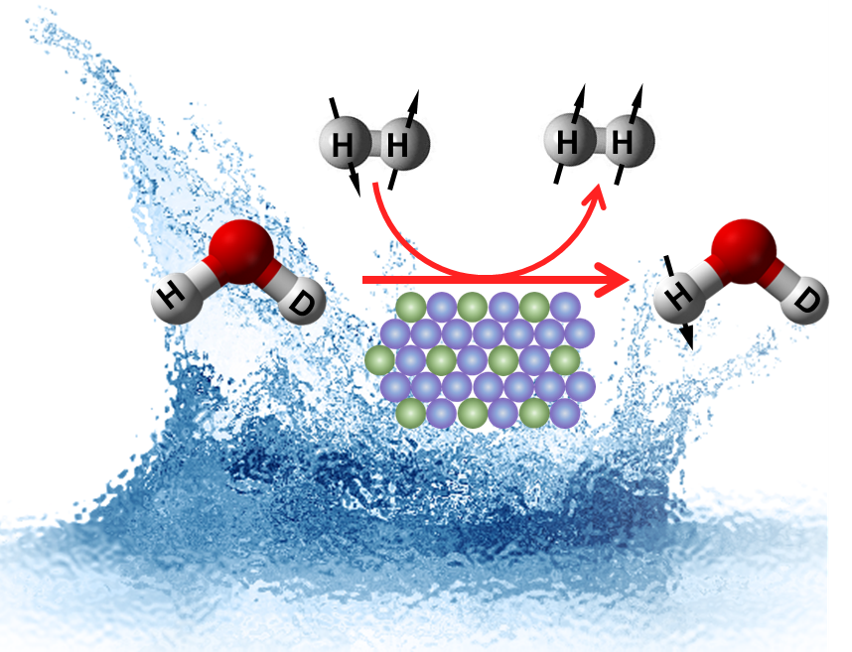
Other ongoing collaborative research involves studies using atomically dispersed Pt stabilized on shaped cerium oxide nanocrystals which exhibit remarkably high activity and pairwise selectivity. These ultra-low loading catalysts were prepared using a modified Atomic Layer Deposition technique in the laboratory of Prof. Hagelin-Weaver.
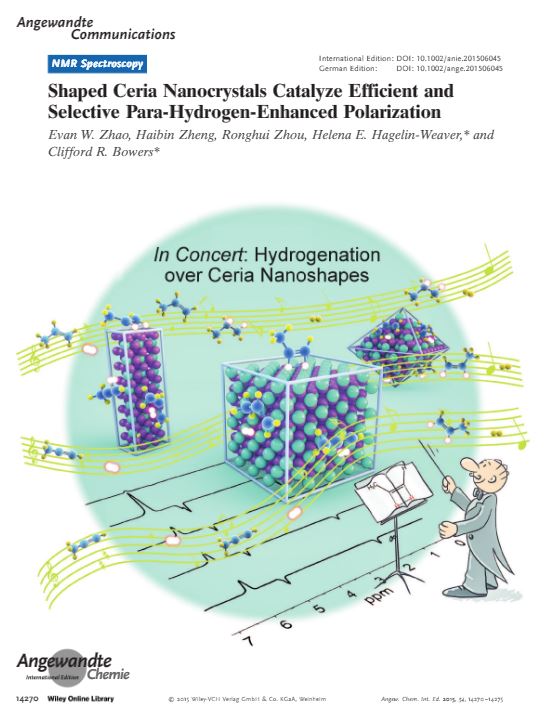
With funding support from the NHMFL User Collaborative Grants Program, the Bowers group is currently developing equipment for parahydrogen-enhanced NMR that will be made available for external users of the NHMFL-AMRIS facility. This includes a recently completed parahydrogen enrichment system with a demonstrated enrichment of 98% over a wide range of operating conditions.Parahydrogen storage and dispensing systems, a high-pressure NMR system for gas/liquid experiments with parahydrogen, and a parahydrogen spray-injection hydrogenation reactor system for solution phase parahydrogen enhanced polarization studies are available. The combination of state-of-the-art parahydrogen-enhanced NMR capabilities and state-of-the-art NMR and imaging spectrometers can provide unparalleled capabilities for NHMFL users.

Broader Impacts
The Bowers research program is inherently interdisciplinary. The research is focused on merging spin physics and state-of-the-art catalysis science, which provides unique education and training opportunities.
The Bowers group regularly participates in several different NSF Research Experiences for Undergraduates programs as well as UF’s CPET-SSTP where high school students like Jason Katz, a senior at Boca-Raton High School, spend a summer month working in the lab. In addition to the promising applications that can impact society through improvements in health care and better utilization of energy resources, education and training of the next generation of scientists produces broader impacts of the NSF-supported research in the Bowers lab.
The Bowers Lab is committed to a diverse and inclusive multidisciplinary research culture that enables lab members to reach individual goals, advance knowledge in our field, and mentor and train the next generation of scientists. All members of the Bowers Lab contribute to an environment that values and respects all individuals and their unique abilities. A laboratory culture where everyone feels they belong is our priority and critical to our success.

